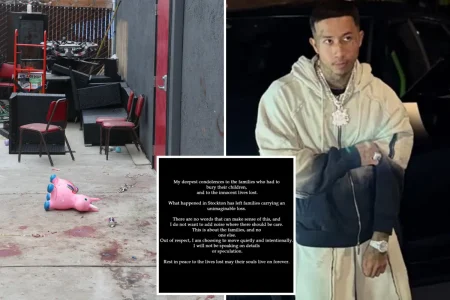A Tragedy in Orange County: The Deadly Consequences of Sanctuary Policies
In a heartbreaking incident that raises serious questions about immigration enforcement, a 71-year-old pedestrian lost his life last Friday in Dana Point, California. Barry William Tutt of La Verne was struck by a vehicle while walking, and despite emergency crews rushing him to a nearby hospital, he succumbed to his injuries. What makes this tragedy particularly troubling is that the driver, who allegedly fled the scene, was a man who had been living in the United States illegally for over a decade after ignoring a deportation order.
Humberto Munoz Gatica, a 57-year-old resident of Laguna Niguel, was identified by witnesses as the driver of a silver Ford sedan that struck Tutt and immediately left the scene. Orange County Sheriff’s deputies eventually tracked down Gatica and arrested him on charges of DUI causing death or bodily injury and hit-and-run causing death or bodily injury. The investigation continues as authorities piece together the events that led to this preventable tragedy. Gatica now faces serious criminal charges that could result in significant prison time if he is convicted.
What has emerged in the aftermath of this incident is a troubling history of immigration violations and criminal behavior. According to federal law enforcement sources, Gatica was first arrested by Immigration and Customs Enforcement (ICE) in 2011 for being in the country illegally. However, under policies implemented during the Obama administration, he was released with only a notice to appear in court – an appointment he never kept. This led to a federal immigration judge ordering his deportation in absentia the following year. Despite this court order, Gatica remained in the United States, effectively becoming an ICE fugitive for over a decade while living in California, a self-designated sanctuary state that limits cooperation between local law enforcement and federal immigration authorities.
This wasn’t Gatica’s first brush with the criminal justice system, either. Federal officials revealed that in 2011, he was arrested on robbery charges in Orange County. Through a plea deal, these charges were reduced to grand theft. This criminal history, combined with his immigration status and the current charges stemming from Tutt’s death, paints a picture of an individual who repeatedly disregarded the law while benefiting from policies that limited immigration enforcement. Gatica’s case highlights the ongoing debate about sanctuary policies and their potential impact on public safety, particularly when individuals with deportation orders and criminal histories remain in communities where they can potentially cause harm.
The tragic death of Barry William Tutt adds to a growing list of incidents across the country where individuals living in the United States illegally after ignoring deportation orders have been charged with serious crimes, including DUI-related deaths. These cases have intensified scrutiny of current immigration policies and enforcement practices. Critics argue that sanctuary policies, while intended to foster trust between immigrant communities and local authorities, can sometimes have the unintended consequence of sheltering individuals who pose genuine public safety risks. They point to cases like Gatica’s as evidence that more robust enforcement of existing deportation orders could prevent future tragedies.
At the heart of this case lies a fundamental tension in American immigration policy: how to balance humanitarian concerns and community trust with public safety and rule of law. The death of Barry William Tutt represents more than just a statistic in the ongoing immigration debate – it represents a life cut short, a family grieving, and a community questioning whether different policies might have prevented this outcome. As the legal process unfolds for Gatica, and as policymakers continue to grapple with immigration enforcement strategies, the human cost of these complex issues remains at the forefront. For now, a community mourns the loss of a 71-year-old man whose walk on a Friday in Orange County ended in tragedy – a tragedy that raises difficult questions about the systems that allowed his alleged killer to remain in the country despite a decade-old deportation order.











